A hardy perennial plant, the Venus Flytrap is not a tropical plant and does not require year-round warm temperatures. Quite the contrary, our Venus Flytrap needs a period of restful dormancy or hibernation.
Venus Flytraps will grow and bloom during the spring and summer months. When autumn arrives, they die back and have the appearance of a small rosette that they maintain throughout the winter.
During this period of rest, the Venus Flytrap saves up its energy in its rhizome under the soil. In the spring, they bounce back thanks to the energy saved up during winter.
- Related: How to Care for Venus Fly Trap
This article will cover the Venus Flytrap dormancy period and everything you need to know to ensure your plants are healthy and happy!
What Does a Dormant Venus Flytrap Look Like?
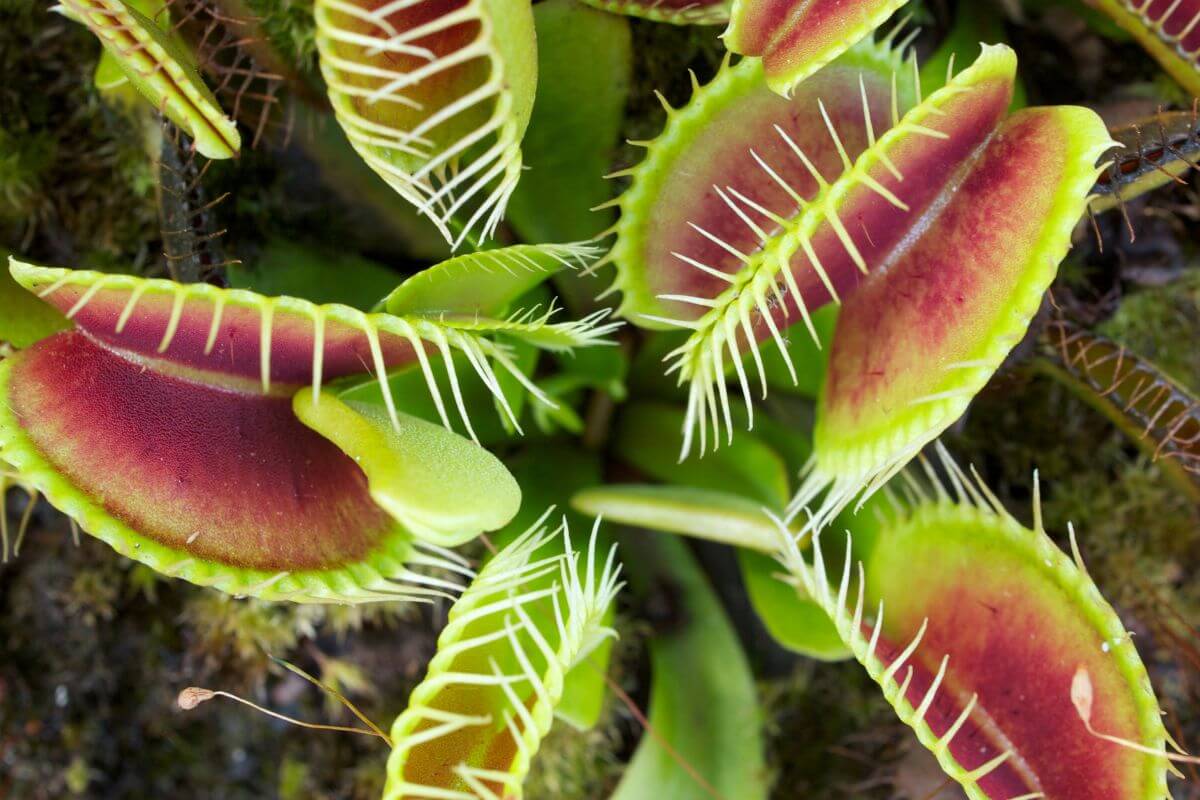
Is My Venus Flytrap Dormant or Dead?
If you notice your Venus Flytrap looks dead, it’s probably because they are dormant. They may look like they are dead, but they are actually alive! This is called “dormancy” and it’s normal when the cold temperatures come.
The Venus Flytrap will die back beginning in the fall months. If they are cultivated outdoors, they will naturally enter the dormant period in the fall. They are capable of withstanding frost and even light freezes. But freezes that last for extended periods will be lethal, killing your plant.
For a Venus Flytrap to enjoy a lengthy lifespan, it must have an annual dormancy period that lasts 3 to 4 months. A minimum period of dormancy should be at least 10 weeks or it will place your plant in danger.
Sleeping Venus Flytraps are not very attractive, so while you may think your plant is dead or dying, it is asleep. Do not throw your plants out. Most of the foliage will also turn black. But this is all to be expected until the warmer temperatures arrive.
Learn more: Why Do Venus Fly Traps Turn Black.
When Is the Venus Flytrap Dormancy Period?
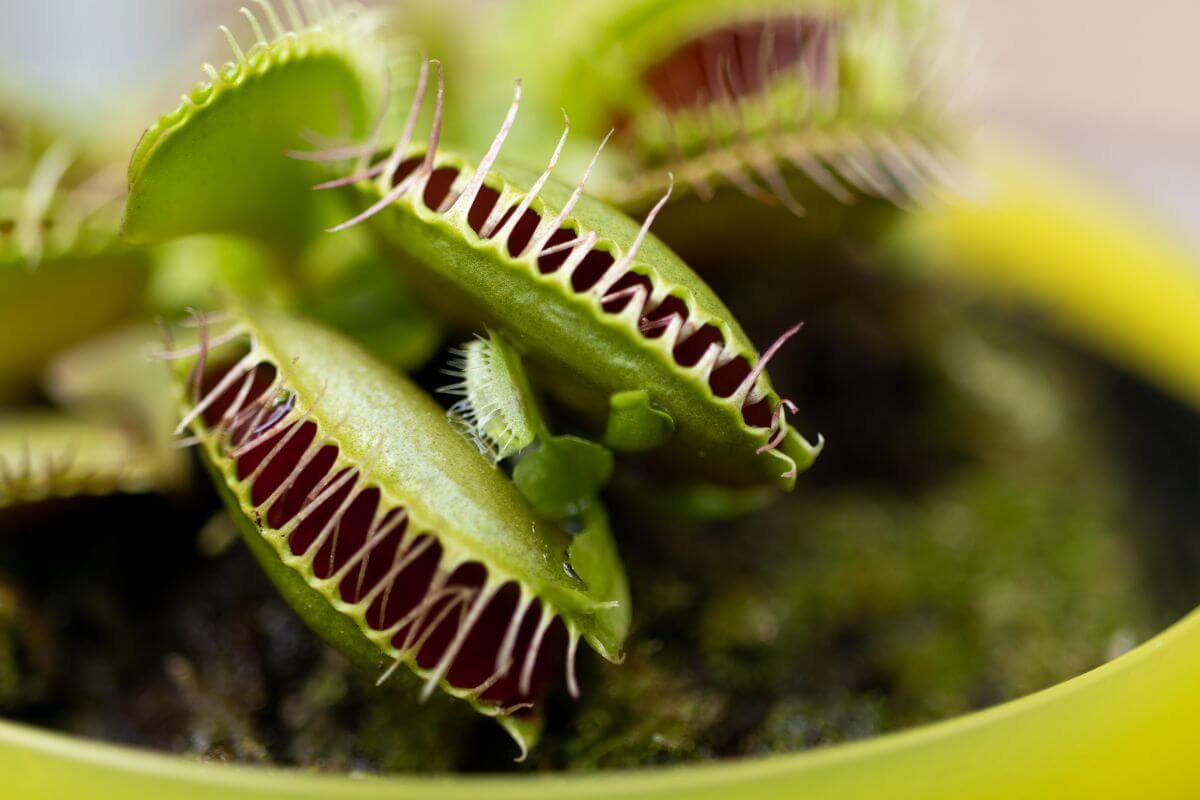
While there is no exact date or number of days for the Venus Flytrap’s dormancy period, dormancy generally lasts approximately three months.
When located in their natural habitat of the eastern coastal states of North and South Carolina, temperatures drop for 3 to 4 months to temperatures that are below 50° Fahrenheit. This usually takes place during the cold frame period from October to February.
If your area’s climate does not have winter, or winter is very short, you will need to consider an alternative strategy known as refrigerator dormancy. More on the Venus Flytrap fridge dormancy method below.
Can The Venus Flytrap Skip Dormancy? Is Dormancy Necessary?
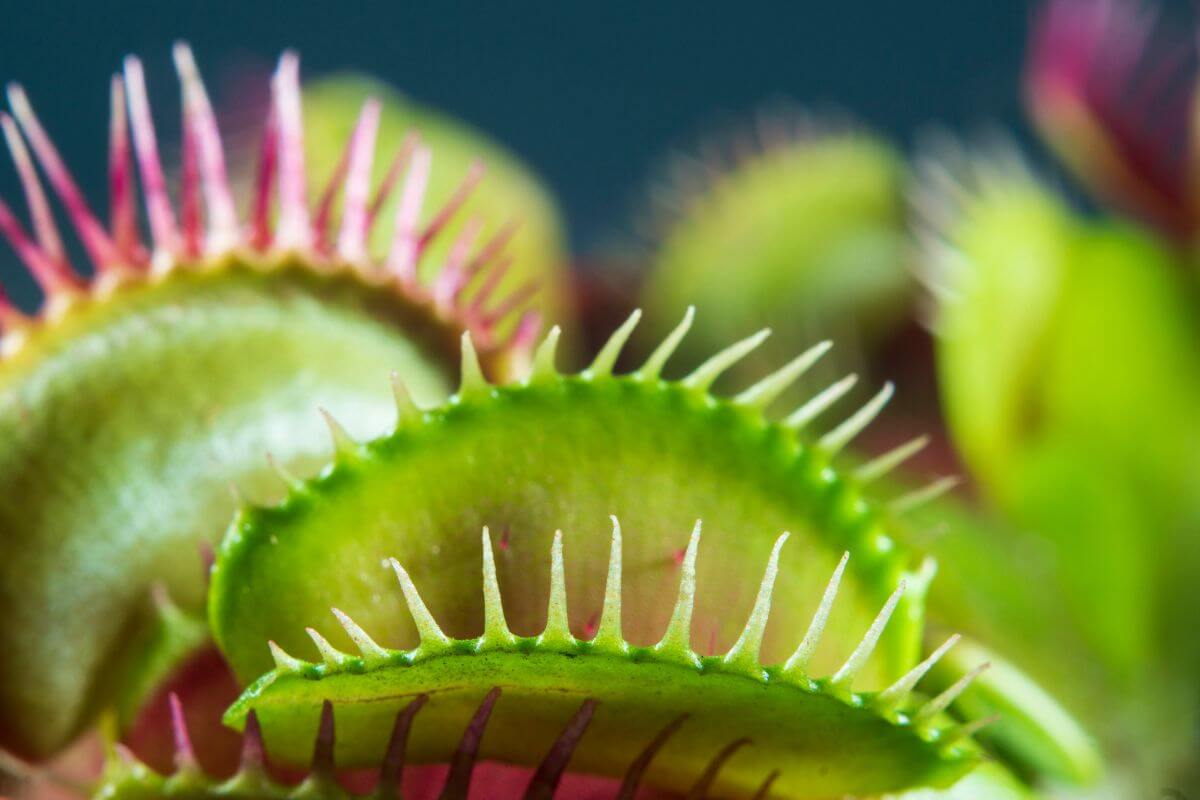
When the cold weather rolls around, your plant will enter a natural winter dormancy period. This generally happens when temperatures continually dip or remain below 45°F for a few weeks. Once they have entered, they should remain in dormancy for 2 to 3 months.
Dormancy is an essential rest period that contributes to plant development. This period allows the plant to rest to enable stronger growth during the growing season. Ideally, your plant should enter dormancy every year.
Indoor gardeners, often unable to provide the right environment for dormancy, will skip or attempt to skip the dormancy period regardless of negative repercussions on the plant. When a plant misses its dormancy period, its growth will slow considerably and become stagnant. They are also less inclined to propagate.
If a Venus Flytrap skips its dormancy period for 2 or 3 consecutive years, it will weaken to the point that it may die.
Dormancy is necessary for your plant’s well-being, and skipping it is never, under any circumstances, recommended. Should it happen once, your plant should be able to manage, it but recurring missed dormancy periods can be lethal.
But there are several circumstances when skipping dormancy can be a suitable option. These include:
1. If the Venus Flytrap Plant is New
Some nurseries or breeders may indicate when a plant last went dormant. If your new plant has already experienced dormancy this year, it does not need to repeat it.
If you do not have adequate information, look at your plant. If you have had it for 3 to 4 months and it appears well-adjusted, allow it to go dormant.
If it does not appear to have adjusted to the environment, skip dormancy this year. Weak plants can die during dormancy.
2. If You Have Owned Your Plant for a Very Brief Period
If you purchased your plant within the past 6 months, you may want to skip dormancy. In some cases, the plant may not have been properly acclimated to its new home.
3. If You are Growing Seedlings or Cuttings
Seedlings in their natural habitat will generally go dormant, however, when very young, they can miss one year.
Venus Flytrap Dormancy Care Guide

The following guidelines will help you with how to care for Venus fly trap in winter hibernation and dormancy.
Watering the Venus Flytrap During Dormancy
Watering should be reduced during dormancy. Be careful of overwatering because if it is too wet for a prolonged period, it will be susceptible to root rot or crown rot. Mold can also set in on dying leaves that are too moist.
Nonetheless, the soil should be kept moist and not allowed to dry out while sleeping.
Light for the Venus Flytrap During Dormancy
Do Venus fly traps need light during dormancy?
The lighting needs of the Venus Flytrap decrease a bit during the dormancy period, but good, natural light exposure during this period is still necessary for the plant’s overall health.
The plant still needs to photosynthesize and create energy. They will collect this energy and store it.
They should not be placed in a dark or low-light space unless it’s in extremely cold temperatures that are 40°F or colder. When temperatures are this cold, they enter a kind of suspended animation, but it is not ideal.
Venus Flytrap Dormancy Temperature and Humidity
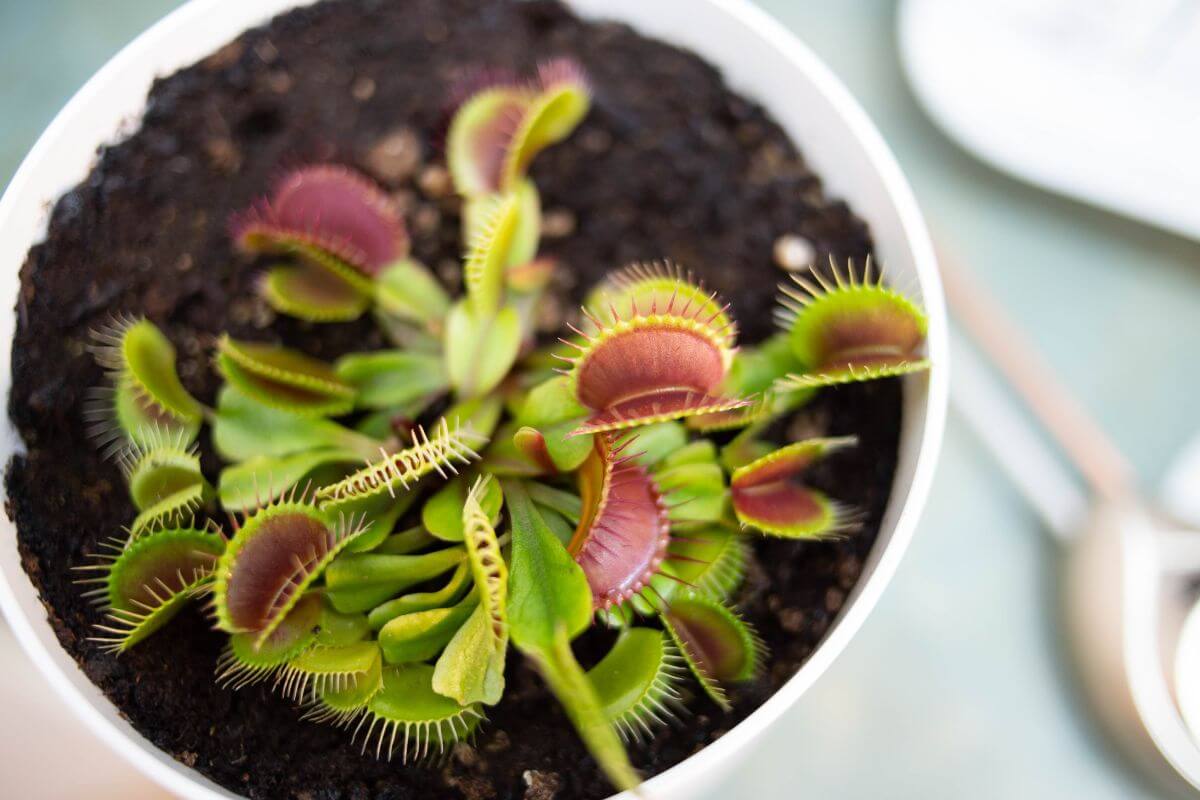
Ideally, your plant should be placed in a location where the environmental temperature remains steady between 32°F and 45°F (0° to 7° C), whether outdoors or indoors.
Temperature plays a crucial role in signaling to the Venus Flytrap that it’s time for dormancy. Your Venus Flytrap will know it’s time to wind down. If you’re keeping your plant indoors, try to mimic these conditions by finding a cooler spot for it during the winter months.
Humidity isn’t as vital during the dormancy period as it is during the growing season. That being said, it’s important to prevent your Venus Flytrap from drying out completely. A slight reduction in watering will simulate the drier winter conditions, but the soil should remain mildly moist.
Can I Feed the Venus Flytrap During Dormancy
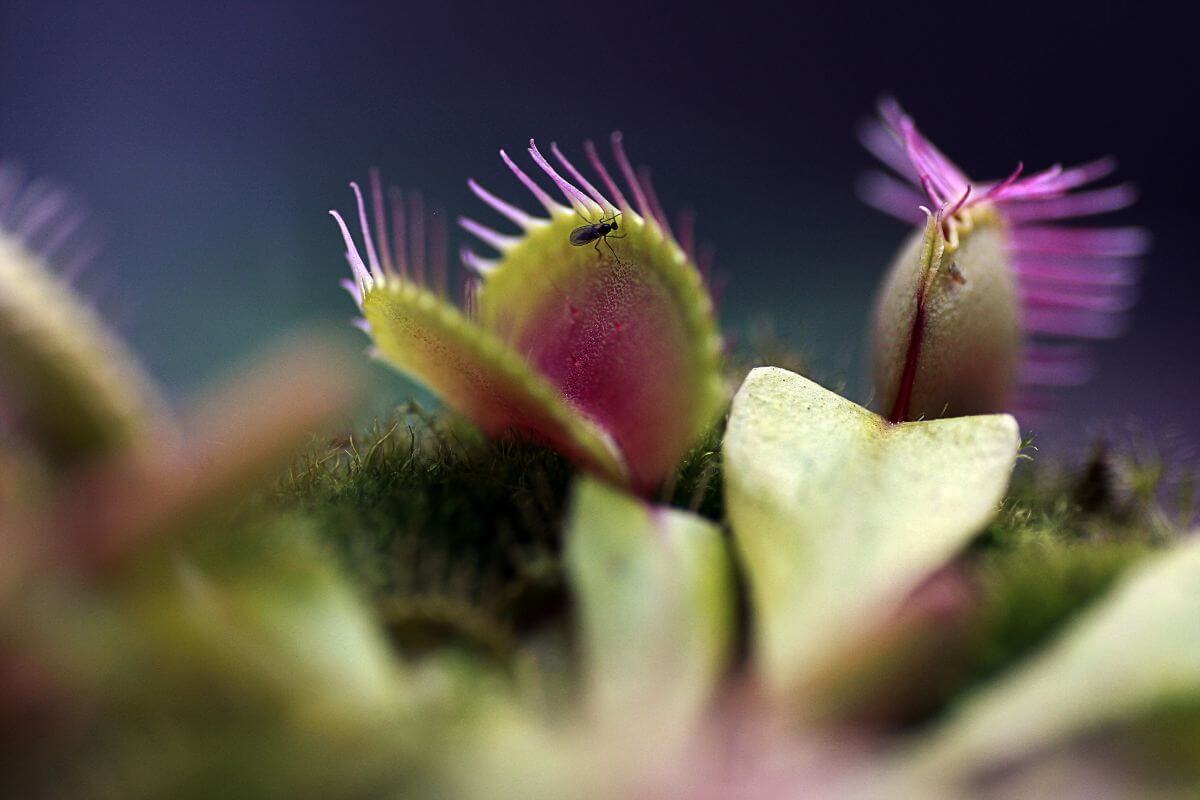
Feeding your Venus Flytrap during its dormancy period isn’t necessary, and it’s actually better to let your plant have a rest from mealtime. Here’s why.
Dormancy is a time for the Venus Flytrap to conserve energy, similar to animals hibernating. It’s not actively growing or producing new traps, and its existing traps may close more slowly, or not at all. This is all perfectly normal and part of the plant’s natural lifecycle.
Given that the plant is in a sort of sleep mode, feeding it isn’t beneficial and could even be harmful. Adding food to the traps can spur the plant to use energy trying to digest the meal, energy that it needs to conserve for the coming spring.
Plus, if the traps aren’t closing and opening properly, food could end up rotting inside, which can lead to all sorts of problems that shorten the Venus fly trap lifespan.
So, during the dormancy period, give your Venus Flytrap a break from its bug-eating routine. Keep up with the watering—though you can reduce it a little—ensure it’s in a cooler spot with less light, and let your plant enjoy its winter snooze.
When spring comes around, it’ll wake up refreshed and ready to start catching its prey again.
Can I Repot the Venus Flytrap During Dormancy
Do not repot the Venus Flytrap during the dormancy period. When Venus Flytraps exit dormancy, you should repot them into a larger pot to accommodate growth.
That said, if it’s absolutely necessary—if the pot is too small or the soil has become unsuitable—you can repot during dormancy.
Repotting your Venus Flytrap during its dormancy period can be done, but it’s not typically the best time. You see, dormancy is a rest period for the plant, a time when it’s conserving energy. Repotting involves a certain amount of stress and disruption, which isn’t ideal when your Flytrap is trying to rest.
Be sure to handle the plant gently to avoid damaging the delicate root system.
The best time to repot, though, is just after the dormancy period, as the plant is waking up and starting to grow again. In the early spring, your Venus Flytrap will be ready to burst forth into the world anew, and repotting can give it the fresh start it needs for a season of healthy, vigorous growth.
Venus Flytrap During Dormancy Outdoors
Venus Flytraps that are cultivated outdoors should have no difficulty entering dormancy during the winter months. Your plant should be placed in a location where temperatures drop below 45°F for 3 to 4 months so that it achieves full dormancy.
When a plant enters dormancy, it will change significantly by losing leaves and shrinking in size as it hibernates. The day length is what guides these plants more than the actual temperature. As days shorten, summer foliage drops. As the temperature drops, the growth rate slows.
They require slightly different care during dormancy. Many gardeners add mulch around the plants in the winter. They may also produce winter leaves which are smaller and hug the ground if the temperature remains constant, without becoming either too cold or too hot.
In USDA hardiness zones 8 or higher, this plant can remain outside year-round. For zones 4 through 7, plant them in the ground and not in containers. Learn more about the best soil type for Venus Flytrap plants.
Do Venus Fly Traps Go Dormant Indoors?
Venus Flytraps can enter into dormancy when cultivated indoors, but only if exposed to cold environmental temperatures. They will not enter into dormancy if the location is heated.
Colder, unheated indoor locations with a temperature below 45°F will work, such as:
- Basements
- Garages
- Porches
Venus Flytraps are native to subtropical wetlands on the East Coast of the United States, which means they’re adapted to a cycle of changing seasons, including a period of dormancy in the winter. Even if they’re grown indoors, they still have an internal clock telling them when it’s time to take a break.
The Venus fly trap dormancy period indoors is like a deep sleep for the plant, but it still needs care. Keep it in a cooler spot with less light than usual to to encourage Venus fly trap hibernation.
Reduce watering to a dormant Venus fly trap, but don’t let it dry out completely. And remember, no feeding—the bugs are taking a winter break too!
Once spring rolls around, your Venus Flytrap should wake up raring to go, ready to start snapping up those bugs again. So yes, even indoor Venus Flytraps need a good winter nap. Think of it as their beauty sleep!
Those areas of the house have cool conditions that are appropriate for Venus fly trap hibernation.
How to Put Venus Fly Trap into Dormancy
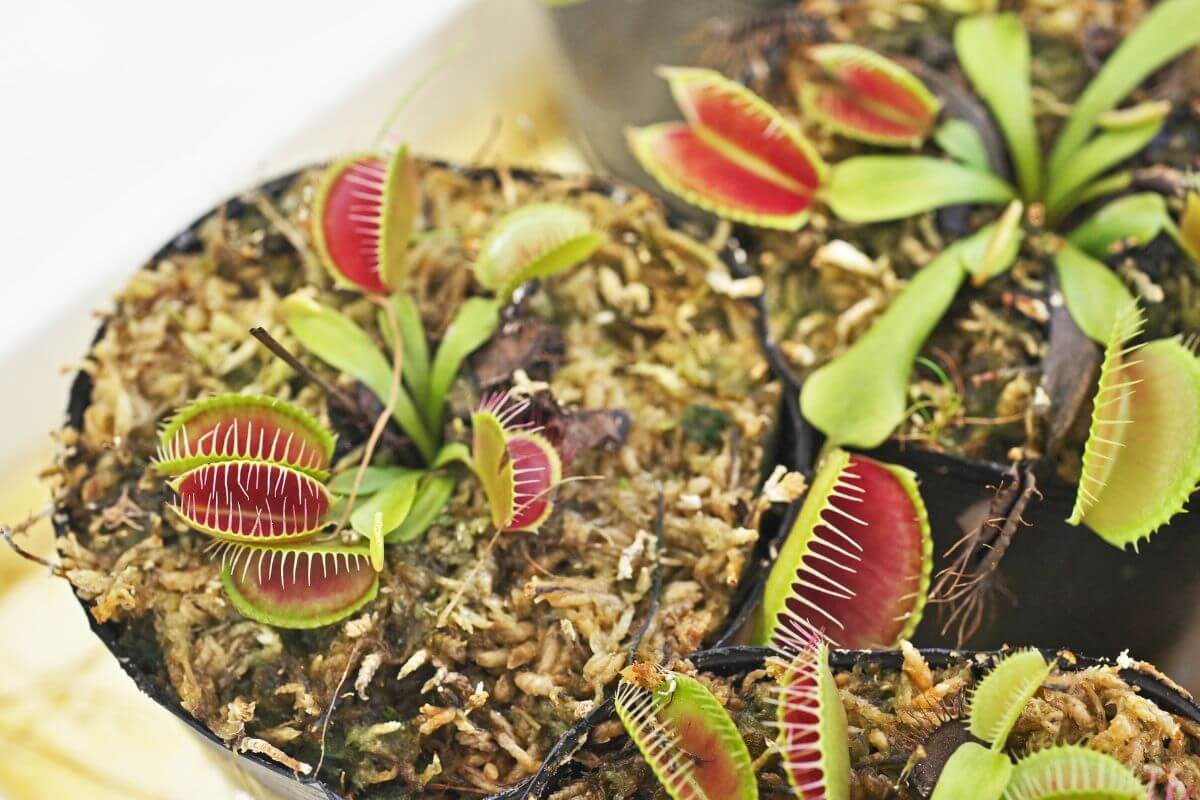
While Venus Flytraps naturally go into dormancy based on seasonal changes in their native habitat, when they’re indoors or in different climates, they might need a little help from you.
Here are different ways you can gently nudge your Venus Flytrap into its dormancy phase.
- Lower Light Levels: Gradually reduce the amount of light your Venus Flytrap is getting. In nature, the shortening days of autumn signal to the plant that it’s time to start winding down.
- Cooler Temperatures: Try to replicate the cooler temperatures of fall and winter. A temperature range of around from 0° to 7° degrees Celsius (50 degrees Fahrenheit) or below is ideal.
- Reduce Watering: Cut back on watering, but don’t let the plant dry out completely. The soil should stay slightly moist. Always use distilled water or rainwater, as Venus Flytraps are sensitive to the minerals found in tap water.
- No Feeding: Stop feeding the plant. Venus Flytraps don’t catch as many bugs during winter in their natural habitat, so your plant doesn’t need to eat during dormancy.
Remember, dormancy is crucial to the health and longevity of Venus Flytraps. It might look like your plant isn’t doing well during this time—leaves may blacken and die off—but this is a normal part of the process. Come spring, your Venus Flytrap should emerge from dormancy ready to grow and thrive.
What is Venus Flytrap Refrigerator Dormancy?
Refrigerators are an excellent place for the Venus Flytrap to go dormant. This is because the refrigerator has a consistent temperature of about 35°F or whatever you set it as.
This is perfect for the plant, but Venus fly trap refrigerator dormancy is more of a last resort if you are unable to use another way to encourage dormancy. But it will coerce your plant into a state of dormancy with a fridge.
You can place your plants in the refrigerator using one of two methods:
- Plants are placed in the refrigerator bare rooted.
- Plants are placed in the refrigerator in pots.
Refrigerator Dormancy with Bare Roots
Here’s are the steps for refrigerator dormancy with bare roots:
- Remove your Venus Flytrap plant gently from its container and dip the plant and the soil in distilled water.
- Swirl the roots in the water to remove the soil.
- When the roots and rhizome are exposed, remove dead black or brown foliage.
- Treat the Venus Flytrap in its entirety with fungicide.
- Now wrap it in sphagnum peat moss or a moist paper towel.
- Water should not leak from the paper towel when squeezed.
- Now place it in a plastic bag with a ziplock.
- Then place it in the crisper drawer in the refrigerator.
- Check it weekly for rotting or fungal growth.
Refrigerator Dormancy with a Pot
This is easier, but will take up more space in the fridge. Here’s are the steps for refrigerator dormancy with a pot:
- If placing your plant in the refrigerator complete with its pot, put the entire pot in a plastic bag.
- Place it in the refrigerator for 3 to 4 months.
Always dust or treat plants that are to be refrigerated with a fungicide, because they are susceptible to mold.
Check on the potted plants every few weeks for drying out or fungal growth.
Venus Flytrap Dormancy Final Thoughts
Venus fly trap dormancy is necessary for a healthy plant. Plants that go through a natural dormancy period will be healthier than those that do not.
Dormant plants grow slower and produce fewer new leaves, so don’t worry if it’s starting to look dead. They tend to stay smaller and less attractive.
Here are other Venus Flytrap articles to learn more about these fun plants:

